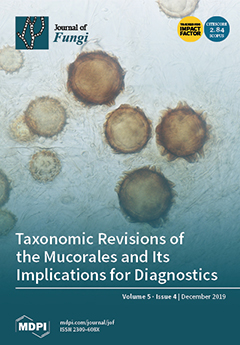Penicillium brevicompactum is a filamentous ascomycete used in the pharmaceutical industry to produce mycophenolic acid, an immunosuppressant agent. To extend options for genetic engineering of this fungus, we have tested two resistance markers that have not previously been applied to
P. brevicompactum.
[...] Read more.
Penicillium brevicompactum is a filamentous ascomycete used in the pharmaceutical industry to produce mycophenolic acid, an immunosuppressant agent. To extend options for genetic engineering of this fungus, we have tested two resistance markers that have not previously been applied to
P. brevicompactum. Although a generally available phleomycin resistance marker (
ble) was successfully used in DNA-mediated transformation experiments, we were not able to use a commonly applicable nourseothricin resistance cassette (
nat1). To circumvent this failure, we constructed a new
nat gene, considering the codon bias for
P. brevicompactum. We then used this modified
nat gene in subsequent transformation experiments for the targeted disruption of two nuclear genes,
MAT1-2-1 and
flbA. For
MAT1-2-1, we obtained deletion strains with a frequency of about 10%. In the case of
flbA, the frequency was about 4%, and this disruption strain also showed reduced conidiospore formation. To confirm the deletion, we used
ble to reintroduce the wild-type genes. This step restored the wild-type phenotype in the
flbA deletion strain, which had a sporulation defect. The successful transformation system described here substantially extends options for genetically manipulating the biotechnologically relevant fungus
P. brevicompactum.
Full article






